Trivia Browser
Collection: Vib-Ribbon
▲
2
▼
The names of Vibri's different forms are:
• Super Vibri (スーパービブリ)
• Frog-Vibri (ケロビブリ, "Kerovibri", a combination of 蛙/ケロ meaning "frog")
• Insect-Vibri (ムシブリ, "Mushibri", a combination of 虫/ムシ meaning "insect")
• Super Vibri (スーパービブリ)
• Frog-Vibri (ケロビブリ, "Kerovibri", a combination of 蛙/ケロ meaning "frog")
• Insect-Vibri (ムシブリ, "Mushibri", a combination of 虫/ムシ meaning "insect")
Vib-Ribbon European manual (page 3 in the manual):
https://www.reddit.com/r/vib_ribbon/comments/eoraod/vib_ribbon_manual_not_the_poster_one/
https://drive.google.com/drive/u/0/folders/1-B3l7-ZUt80k-JGjXjWHqzzvil0u_XxJ
Vib-Ripple manual (page 8 in the manual):
https://archive.org/details/vibripplemanual/page/n9/mode/1up
Vib-Rihon (Vib-Ribbon art book) (page 13 in the book):
https://archive.org/details/vib-rihon-scans
Famitsu Issue #0570 (November 19, 1999) (page 222-223 in the magazine):
https://archive.org/details/famitsu0570/page/222/mode/1up
https://www.reddit.com/r/vib_ribbon/comments/eoraod/vib_ribbon_manual_not_the_poster_one/
https://drive.google.com/drive/u/0/folders/1-B3l7-ZUt80k-JGjXjWHqzzvil0u_XxJ
Vib-Ripple manual (page 8 in the manual):
https://archive.org/details/vibripplemanual/page/n9/mode/1up
Vib-Rihon (Vib-Ribbon art book) (page 13 in the book):
https://archive.org/details/vib-rihon-scans
Famitsu Issue #0570 (November 19, 1999) (page 222-223 in the magazine):
https://archive.org/details/famitsu0570/page/222/mode/1up
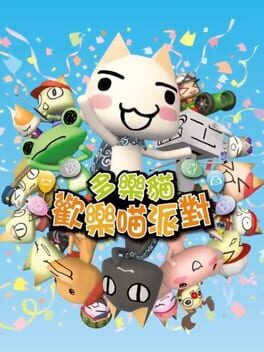
▲
1
▼
A different version of the game was released in other Asian countries, including Hong Kong, that contained an English translation, making it the first Doko Demo Issyo game to be officially released in English.
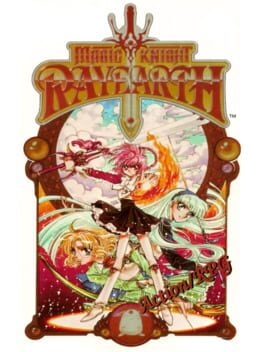
▲
2
▼
 Although released in Japan on August 25, 1995, early in the Sega Saturn's life, Magic Knight Rayearth was the final Saturn game released in the United States, in late 1998. This long localization process was discussed in the game's US manual, where the localizers at Working Design shared details about the process and even acknowledged that it was likely the last Saturn game to be released in the country.
Although released in Japan on August 25, 1995, early in the Sega Saturn's life, Magic Knight Rayearth was the final Saturn game released in the United States, in late 1998. This long localization process was discussed in the game's US manual, where the localizers at Working Design shared details about the process and even acknowledged that it was likely the last Saturn game to be released in the country.
Release schedule of Sega Saturn games in Japan (in Japanese):
https://web.archive.org/web/20200319180754/https://sega.jp/history/hard/segasaturn/software.html
Game Informer Issue #68 (December 1998) (page 89 in the magazine) acknowledges the game's status as the final Sega Saturn release in America.
https://retrocdn.net/images/6/67/GameInformer_US_068.pdf
Magic Knight Rayearth US game manual (page 16 in the manual):
https://segaretro.org/images/c/c4/Mkr_sat_us_manual.pdf
https://web.archive.org/web/20200319180754/https://sega.jp/history/hard/segasaturn/software.html
Game Informer Issue #68 (December 1998) (page 89 in the magazine) acknowledges the game's status as the final Sega Saturn release in America.
https://retrocdn.net/images/6/67/GameInformer_US_068.pdf
Magic Knight Rayearth US game manual (page 16 in the manual):
https://segaretro.org/images/c/c4/Mkr_sat_us_manual.pdf
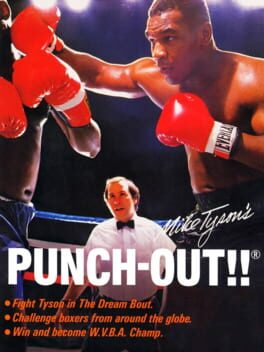
▲
1
▼
 Although Mike Tyson is not fightable in the original limited edition Japanese release of the game, he is nonetheless present in its data as a fully coded, yet unused opponent. Tyson's associated text and screens are also fully intact, though the code to bring up the "Mike is waiting for your challenge!!" screen is absent from the game's data. Additionally, his ring palette is not implemented, with the background consequently defaulting to a gray mat and orange audience not featured by any opponent accessible in any of the three versions of the NES release. Taken together, this implies that Tyson was already under consideration as the game's celebrity guest during the limited edition's development.
Although Mike Tyson is not fightable in the original limited edition Japanese release of the game, he is nonetheless present in its data as a fully coded, yet unused opponent. Tyson's associated text and screens are also fully intact, though the code to bring up the "Mike is waiting for your challenge!!" screen is absent from the game's data. Additionally, his ring palette is not implemented, with the background consequently defaulting to a gray mat and orange audience not featured by any opponent accessible in any of the three versions of the NES release. Taken together, this implies that Tyson was already under consideration as the game's celebrity guest during the limited edition's development.
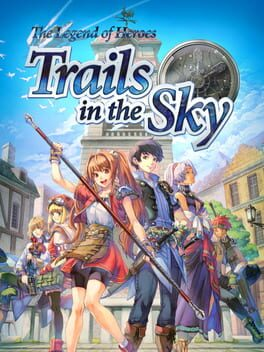
▲
1
▼
When localizing the game into English, Xseed Games' editors found themselves challenged by the game's script, which has approximately 1.5 million Japanese characters in it. According to lead editor Jessica Chavez, many other companies had been put off localizing it specifically because of its length, and during the process she had "worked from home 11-14hrs a day, 6 days/week, lost 7lbs, cut off 18inches of my hair and used the XSEED twitter account to further the cause of bacon on more than one occasion". Ultimately, the company had to employ three translators, two editors (one of whom was brought on to help finish chapter 4 of the game), and "one or two other helpful Sora no Kiseki experts that didn’t mind spontaneous Instant Messages asking about whether or not certain characters would be at home saying things like, 'Lo! I am hoist with my own petard!'".

subdirectory_arrow_right Metal Gear Solid: Peace Walker (Game)
▲
2
▼
EVA's English voice actress in Metal Gear Solid 3: Snake Eater and Metal Gear Solid: Peace Walker was credited under the name Suzetta Miñet. Fans widely assumed that this was a pseudonym as she had no other credits in anything, which sparked years of speculation as to who she could be. One of the most leading theories was that EVA was voiced by Debi Mae West, the voice of Meryl in Metal Gear Solid and Metal Gear Solid 4: Guns of the Patriots. However, while West acknowledged that the characters sounded similar, she denied she was the voice of EVA in 2015. Konami would eventually confirm in a 2024 behind-the-scenes video promoting Metal Gear Solid Delta: Snake Eater that the pseudonym belonged to Jodi Benson, who was best known for voicing Ariel in Disney's 1989 adaptation of "The Little Mermaid". Benson explained that she used the pseudonym at the recommendation of the game's English voice director Kris Zimmerman Salter, because of her association with Disney and other family-friendly roles aimed towards younger audiences at the time. The name itself was based on a pet dog Benson owned in her childhood named "Suzette Monet".
Metal Gear Solid: Legacy Series Part 3:
https://www.youtube.com/watch?v=iDIWFh7nYa4
Snake Eater end credits:
https://www.youtube.com/watch?v=e7MjRQxYL2w
Peace Walker end credits:
https://www.youtube.com/watch?v=ESBxEcd8r7Q#t=84s
The Kojima Productions Report: Session 056:
https://web.archive.org/web/20160409222535/http://www.konami.jp/kojima_pro/radio/the_report/the_report_056.mp3
Debi Mae West 2015 interview:
https://www.youtube.com/watch?v=u1mM26_fta0#t=3009s
https://www.youtube.com/watch?v=iDIWFh7nYa4
Snake Eater end credits:
https://www.youtube.com/watch?v=e7MjRQxYL2w
Peace Walker end credits:
https://www.youtube.com/watch?v=ESBxEcd8r7Q#t=84s
The Kojima Productions Report: Session 056:
https://web.archive.org/web/20160409222535/http://www.konami.jp/kojima_pro/radio/the_report/the_report_056.mp3
Debi Mae West 2015 interview:
https://www.youtube.com/watch?v=u1mM26_fta0#t=3009s
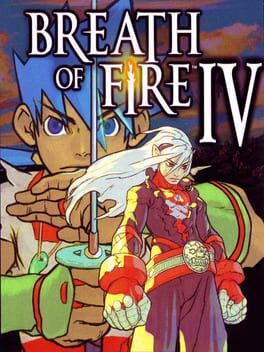
▲
1
▼
 The Japanese version of the game features a unique location west of Mt. Glom, a small riverside woodland simply called "?". This area is only accessible if the player patches their memory card using a CD distributed with volume 147 of Dengeki PlayStation. The primary feature of ? is Dengeki-ya, a Special Store containing a lottery, a shop, and a free Rusted Sword. Despite tying in with a magazine published exclusively in Japan, the files for ? are still present in the US release's data.
The Japanese version of the game features a unique location west of Mt. Glom, a small riverside woodland simply called "?". This area is only accessible if the player patches their memory card using a CD distributed with volume 147 of Dengeki PlayStation. The primary feature of ? is Dengeki-ya, a Special Store containing a lottery, a shop, and a free Rusted Sword. Despite tying in with a magazine published exclusively in Japan, the files for ? are still present in the US release's data.
The Cutting Room Floor article:
https://tcrf.net/Breath_of_Fire_IV#Regional_Differences
Gameplay footage of a restoration patch which adds ? back to the English-language version:
https://www.youtube.com/watch?v=n6DjQzPWaKE
https://tcrf.net/Breath_of_Fire_IV#Regional_Differences
Gameplay footage of a restoration patch which adds ? back to the English-language version:
https://www.youtube.com/watch?v=n6DjQzPWaKE
Franchise: Star Fox
▲
1
▼
The Japanese text for Papetoon, the home planet of Fox McCloud, is "パペトゥーン". Amusingly, this is also the Japanese text for Puppetoons, a Hungarian-American puppet and cartoon series created by George Pal. As the Star Fox series was inspired by Shigeru Miyamoto's love of old puppet dramas such as the Gerry and Sylvia Anderson "supermarionation" television series "Thunderbirds", it could be said that this is a joke that Fox originated from this show.
Star Fox character name origins Reddit thread:
https://www.reddit.com/r/starfox/comments/11pogfk/the_untold_origins_of_star_fox_names_oikonny_kew/
Star Fox 64 Japanese manual (Page 5 in the manual):
https://archive.org/details/starfoxjapanmanualtest/page/n4/mode/1up
https://www.reddit.com/r/starfox/comments/11pogfk/the_untold_origins_of_star_fox_names_oikonny_kew/
Star Fox 64 Japanese manual (Page 5 in the manual):
https://archive.org/details/starfoxjapanmanualtest/page/n4/mode/1up
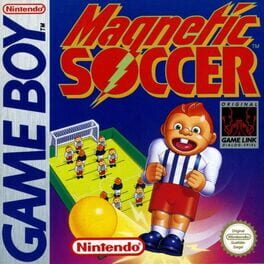
▲
2
▼
During the September 2020 Game Boy lot check leak, it was discovered that Magnetic Soccer was at one point planned to have a Japanese release under the name "Kick Attack!!". As part of this, alternate versions of the game's title and sound test screens were found: along with the logo and copyright changes, the colors of the player's skin and outfit were swapped (a change that applies to both screens), the ball uses different shading, and the player shouts "Fight!!" and "Go! Go!" in text form, something that does not happen in the European version.
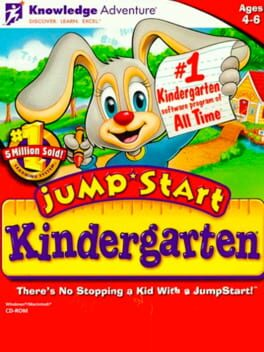
▲
1
▼
The French version of the game features numerous differences from the US version:
• Both the auto play screen and the title screen are different, with the former using different artwork for the characters and the latter having a different design altogether.
• The Radio activity features six songs instead of eight, with four of those songs being completely different from the US version ("La chanson des nombres", "Hé mouche", "Promenons-nous dans les bois", and "La cucaracha"), and the two songs based on songs from the US version using different instruments and melodies as well as being shorter. The buttons were altered accordingly with only six present, and the four songs added in the French version use different graphics.
• The graphics for the decorations seen in the Clock activity were altered. The two sun and moon designs at the top were replaced with a different combined sun/moon design in the bottom-right corner, and instead of two green leaf designs at the bottom like in the original, there are three wood-colored leaf designs at the top and bottom-left corners. Additionally, the time display was changed from a 12-hour clock to a 24-hour clock.
• 9 holidays from the original game were completely omitted from the Bulletin Board in the French release, while others were replaced with different holidays. These include Martin Luther King Jr. Day being replaced by Epiphany, Easter being replaced by April Fool's Day, and Veteran's Day, Election Day and Thanksgiving all being replaced by Armistice Day.
• The Picnic area seems to have been deliberately removed from the French version, as it is completely absent in-game and in the manual, and interacting with the picnic basket in the backyard does nothing.
• In the French version, whenever a sound effect plays or a character speaks, the background music will stop playing until they are done. In the US version, the sound effects and dialogue will play over top of the background music.
• Both the auto play screen and the title screen are different, with the former using different artwork for the characters and the latter having a different design altogether.
• The Radio activity features six songs instead of eight, with four of those songs being completely different from the US version ("La chanson des nombres", "Hé mouche", "Promenons-nous dans les bois", and "La cucaracha"), and the two songs based on songs from the US version using different instruments and melodies as well as being shorter. The buttons were altered accordingly with only six present, and the four songs added in the French version use different graphics.
• The graphics for the decorations seen in the Clock activity were altered. The two sun and moon designs at the top were replaced with a different combined sun/moon design in the bottom-right corner, and instead of two green leaf designs at the bottom like in the original, there are three wood-colored leaf designs at the top and bottom-left corners. Additionally, the time display was changed from a 12-hour clock to a 24-hour clock.
• 9 holidays from the original game were completely omitted from the Bulletin Board in the French release, while others were replaced with different holidays. These include Martin Luther King Jr. Day being replaced by Epiphany, Easter being replaced by April Fool's Day, and Veteran's Day, Election Day and Thanksgiving all being replaced by Armistice Day.
• The Picnic area seems to have been deliberately removed from the French version, as it is completely absent in-game and in the manual, and interacting with the picnic basket in the backyard does nothing.
• In the French version, whenever a sound effect plays or a character speaks, the background music will stop playing until they are done. In the US version, the sound effects and dialogue will play over top of the background music.
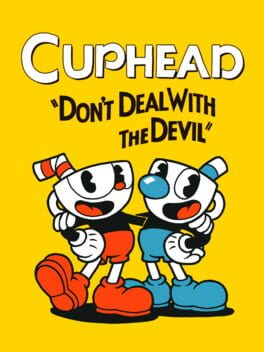
▲
4
▼
The Latin American Spanish translation of The Delicious Last Course DLC changes The Pawns mini-boss death quote to "Pasito a pasito, suave suavecito, me llevo la victoria, poquito a poquito". This is a reference to a line from the song "Despacito" by Luis Fonsi and Daddy Yankee: "Pasito a pasito, suave suavecito, nos vamos pegando poquito a poquito."
In-game footage:
https://www.youtube.com/watch?v=8-_hxWEcdmM#t=143s
Luis Fonsi - Despacito ft. Daddy Yankee:
https://www.youtube.com/watch?v=kJQP7kiw5Fk#t=148s
https://www.youtube.com/watch?v=8-_hxWEcdmM#t=143s
Luis Fonsi - Despacito ft. Daddy Yankee:
https://www.youtube.com/watch?v=kJQP7kiw5Fk#t=148s

▲
4
▼
 In the English release of Street Fighter II, one of Ryu's quotes to defeated opponents is "You must defeat Sheng Long to stand a chance." "Sheng Long" is a mistranslation of Ryu's flying uppercut move Shōryūken (昇龍拳) stemming from the first two Japanese characters meaning "shēng lóng" in Chinese pinyin. As a result, players mistakenly thought that Ryu was referring to a person named Sheng Long instead of his Shōryūken, and that he was a secret playable character.
In the English release of Street Fighter II, one of Ryu's quotes to defeated opponents is "You must defeat Sheng Long to stand a chance." "Sheng Long" is a mistranslation of Ryu's flying uppercut move Shōryūken (昇龍拳) stemming from the first two Japanese characters meaning "shēng lóng" in Chinese pinyin. As a result, players mistakenly thought that Ryu was referring to a person named Sheng Long instead of his Shōryūken, and that he was a secret playable character.Amidst a swarm of fan mail to gaming publications asking how to unlock Sheng Long, the American magazine Electronic Gaming Monthly published a guide to fight him as a secret boss for their annual April Fools' prank in 1992. Photoshopped screenshots of Sheng Long fighting Ryu were created by editor Ken Williams, who also wrote "ridiculous requirements" to find him that were meant to imply he was not real, but were actually attempted by players. In response to complaints, they revealed at the end of the year that Sheng Long was a hoax, and expressed surprise over it gaining worldwide coverage as other publications in Eurasian countries reprinted the guide without their permission.
Sheng Long was brought back for a second April Fools' prank in 1997 in response to rumors that he could be in Street Fighter III, creating hand-drawn art of him and claiming he was the localized version of the real non-playable character Gouken. Despite adding more obvious clues to it being a prank, according to the magazine's June 1997 issue, this second prank was so convincing that Capcom of America allegedly fell for it and called their Japanese headquarters to ask why they were not told he was in the game.
Sheng Long left a continuing influence on video game hoaxes and the Street Fighter series, leading to a scrapped official appearance in the game adaptation of Street Fighter: The Movie, and Capcom pulling their own Sheng Long pranks in 2008 and 2017. In 2023, Sheng Long made his first canonical appearance in the series in Street Fighter 6 as a non-playable opponent using Ryu's fighting style, and can be fought in the World Tour mode after completing the game.
Electronic Gaming Monthly Issue #033, April 1992 (page 60 in the magazine):
https://www.retromags.com/files/file/2823-electronic-gaming-monthly-issue-033-april-1992/
Electronic Gaming Monthly's 1992 Video Game Buyers Guide (page 22 in the book):
https://archive.org/details/ElectronicGamingMonthlyBuyerSGuide1993/page/n21/mode/2up
Electronic Gaming Monthly Issue #093, April 1997 (page 80 in the magazine):
https://archive.org/details/Electronic_Gaming_Monthly_93_April_1997_U/page/n85/mode/2up
Electronic Gaming Monthly Issue #095, June 1997 (pages 102-103 in the magazine):
https://www.retromags.com/files/file/3685-electronic-gaming-monthly-issue-095-june-1997/
Capcom Sheng Long 2008 prank:
https://web.archive.org/web/20080405021441/http://www.capcom-fc.com/sf4/2008/04/post_19.html
Capcom Sheng Long 2008 prank origins blog posts:
https://web.archive.org/web/20080405154132/http://www.capcom-fc.com/sf4/2008/04/41.html
https://web.archive.org/web/20080616135049/http://blog.capcom.com/archives/1106
Capcom Sheng Long 2017 prank:
https://web.archive.org/web/20170330210110/https://game.capcom.com/cfn/sfv/column/131583
https://www.capcom.co.jp/sfv/sp/160225_interview_02.html
Sheng Long in Street Fighter 6:
https://www.thegamer.com/street-fighter-6-things-only-fans-noticed/
https://www.ign.com/articles/30-years-later-street-fighter-6-finally-gives-sheng-long-the-canon-appearance-he-deserves
https://www.youtube.com/watch?v=-fvYor_MVts
The Video Game History Foundation video on stories from Electronic Gaming Monthly's run:
https://www.youtube.com/watch?v=4l_ACqlxrvI
GameSpot article on the history of Sheng Long:
https://web.archive.org/web/20090404063051/http://www.gamespot.com/features/vgs/universal/sfhistory/char_sheng_long.html
Supplementary Wikipedia article for more information:
https://en.wikipedia.org/wiki/Sheng_Long
https://www.retromags.com/files/file/2823-electronic-gaming-monthly-issue-033-april-1992/
Electronic Gaming Monthly's 1992 Video Game Buyers Guide (page 22 in the book):
https://archive.org/details/ElectronicGamingMonthlyBuyerSGuide1993/page/n21/mode/2up
Electronic Gaming Monthly Issue #093, April 1997 (page 80 in the magazine):
https://archive.org/details/Electronic_Gaming_Monthly_93_April_1997_U/page/n85/mode/2up
Electronic Gaming Monthly Issue #095, June 1997 (pages 102-103 in the magazine):
https://www.retromags.com/files/file/3685-electronic-gaming-monthly-issue-095-june-1997/
Capcom Sheng Long 2008 prank:
https://web.archive.org/web/20080405021441/http://www.capcom-fc.com/sf4/2008/04/post_19.html
Capcom Sheng Long 2008 prank origins blog posts:
https://web.archive.org/web/20080405154132/http://www.capcom-fc.com/sf4/2008/04/41.html
https://web.archive.org/web/20080616135049/http://blog.capcom.com/archives/1106
Capcom Sheng Long 2017 prank:
https://web.archive.org/web/20170330210110/https://game.capcom.com/cfn/sfv/column/131583
https://www.capcom.co.jp/sfv/sp/160225_interview_02.html
Sheng Long in Street Fighter 6:
https://www.thegamer.com/street-fighter-6-things-only-fans-noticed/
https://www.ign.com/articles/30-years-later-street-fighter-6-finally-gives-sheng-long-the-canon-appearance-he-deserves
https://www.youtube.com/watch?v=-fvYor_MVts
The Video Game History Foundation video on stories from Electronic Gaming Monthly's run:
https://www.youtube.com/watch?v=4l_ACqlxrvI
GameSpot article on the history of Sheng Long:
https://web.archive.org/web/20090404063051/http://www.gamespot.com/features/vgs/universal/sfhistory/char_sheng_long.html
Supplementary Wikipedia article for more information:
https://en.wikipedia.org/wiki/Sheng_Long
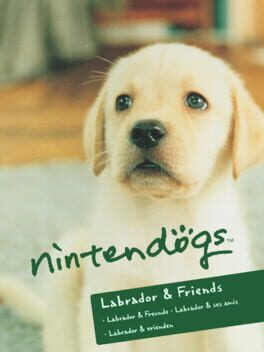
subdirectory_arrow_right Nintendogs: Best Friends (Game), Nintendogs: Dachshund & Friends (Game), Nintendogs: Dalmatian & Friends (Game), Nintendogs: Chihuahua & Friends (Game), Nintendogs: Shiba & Friends (Game)
▲
1
▼
 There are two unused pieces of headgear in the files of the original Nintendogs games: a chonmage wig (a Japanese male ponytail haircut worn by samurais in the Edo period to hold their helmets in place), and an afro wig. The chonmage has an unused description found in the Japanese version of the games and had all of its assets in the international releases replaced with the data for the Rainbow Wig. The afro on the other hand was finished enough that you can use cheat codes to make a dog wear it, but it does not have any leftover text or item attributes that let it be obtained as an item. It may have been cut from the games late into development due to concerns over racial offense and replaced with the Rainbow Wig, which has a very similar appearance to the afro, but with a rainbow-colored texture instead of one resembling black hair.
There are two unused pieces of headgear in the files of the original Nintendogs games: a chonmage wig (a Japanese male ponytail haircut worn by samurais in the Edo period to hold their helmets in place), and an afro wig. The chonmage has an unused description found in the Japanese version of the games and had all of its assets in the international releases replaced with the data for the Rainbow Wig. The afro on the other hand was finished enough that you can use cheat codes to make a dog wear it, but it does not have any leftover text or item attributes that let it be obtained as an item. It may have been cut from the games late into development due to concerns over racial offense and replaced with the Rainbow Wig, which has a very similar appearance to the afro, but with a rainbow-colored texture instead of one resembling black hair.
The Cutting Room Floor articles:
https://tcrf.net/Nintendogs/Unused_Item_Data
https://tcrf.net/Nintendogs/Unused_Text#Chonmage
Nintendogs Rainbow Wig footage:
https://www.youtube.com/watch?v=dU8HifjvgdI
https://tcrf.net/Nintendogs/Unused_Item_Data
https://tcrf.net/Nintendogs/Unused_Text#Chonmage
Nintendogs Rainbow Wig footage:
https://www.youtube.com/watch?v=dU8HifjvgdI
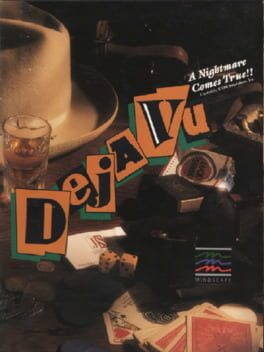
This trivia has been marked as "Not Safe for Work".
It may not be appropriate for all visitors and definitely isn't appropriate for work or school environments.
Click here to unhide it.
It may not be appropriate for all visitors and definitely isn't appropriate for work or school environments.
Click here to unhide it.
▲
1
▼

This trivia has been marked as "Not Safe for Work".
It may not be appropriate for all visitors and definitely isn't appropriate for work or school environments.
Click here to unhide it.
It may not be appropriate for all visitors and definitely isn't appropriate for work or school environments.
Click here to unhide it.
▲
1
▼
Deja Vu NES comparison:
https://tcrf.net/Deja_Vu_(NES)#Dead_Man
Deja Vu Amiga footage:
https://www.youtube.com/watch?v=xwrqhsTFTVU#t=157s
Deja Vu Mac footage:
https://www.youtube.com/watch?v=BXZJMkQgasE#t=57s
Deja Vu Commodore 64 footage:
https://www.youtube.com/watch?v=I4ezSrZ1gWk#t=681s
https://tcrf.net/Deja_Vu_(NES)#Dead_Man
Deja Vu Amiga footage:
https://www.youtube.com/watch?v=xwrqhsTFTVU#t=157s
Deja Vu Mac footage:
https://www.youtube.com/watch?v=BXZJMkQgasE#t=57s
Deja Vu Commodore 64 footage:
https://www.youtube.com/watch?v=I4ezSrZ1gWk#t=681s
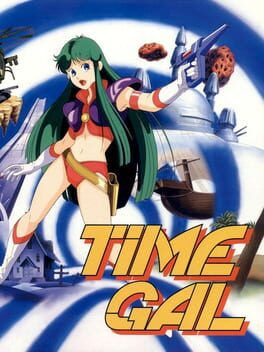
This trivia has been marked as "Not Safe for Work".
It may not be appropriate for all visitors and definitely isn't appropriate for work or school environments.
Click here to unhide it.
It may not be appropriate for all visitors and definitely isn't appropriate for work or school environments.
Click here to unhide it.
▲
1
▼
Platform: Nintendo Entertainment System
▲
1
▼
 Both the NES and Famicom saw official releases in British Hong Kong, but the region received the NES first despite it being a later hardware revision of the Famicom. Because of this, the Hong Konger Famicom was itself marketed as an upgraded model despite the opposite being true. A switch was also added to the back of the system that toggles the Famicom's output between PAL 50Hz and PAL 60Hz outputs.
Both the NES and Famicom saw official releases in British Hong Kong, but the region received the NES first despite it being a later hardware revision of the Famicom. Because of this, the Hong Konger Famicom was itself marketed as an upgraded model despite the opposite being true. A switch was also added to the back of the system that toggles the Famicom's output between PAL 50Hz and PAL 60Hz outputs.
Platform: Nintendo Entertainment System
▲
2
▼
 Popular conceptions about Nintendo's release history in Europe claim that their hardware was never released in the former Eastern Bloc until the 21st century. Rather, these countries instead saw the proliferation of various clone consoles called "Famiclones", such as the Dendy (a Taiwanese-built bootleg that achieved widespread popularity in the Commonwealth of Independent States, made up of the ex-republics of the former Soviet Union) and the Pegasus (which became as popular in Poland as the Dendy did in Eastern Europe). However, while Famiclones did indeed dominate the Eastern European gaming market during the 1990s, Nintendo was not only aware of this, but actively attempted to halt the spread of bootlegs in these regions in favor of officially sanctioned products.
Popular conceptions about Nintendo's release history in Europe claim that their hardware was never released in the former Eastern Bloc until the 21st century. Rather, these countries instead saw the proliferation of various clone consoles called "Famiclones", such as the Dendy (a Taiwanese-built bootleg that achieved widespread popularity in the Commonwealth of Independent States, made up of the ex-republics of the former Soviet Union) and the Pegasus (which became as popular in Poland as the Dendy did in Eastern Europe). However, while Famiclones did indeed dominate the Eastern European gaming market during the 1990s, Nintendo was not only aware of this, but actively attempted to halt the spread of bootlegs in these regions in favor of officially sanctioned products.In 1994, Nintendo made a deal with Steepler, the Dendy's distributor in Eastern Europe, to permit continued sale of the Dendy in exchange for equal distribution of the Super Nintendo Entertainment System and Game Boy in the Commonwealth of Independent States; official Russian releases of these systems even included Dendy stickers on the packaging to reflect the arrangement. Meanwhile, in various other parts of the former Eastern Bloc, Nintendo made deals with other third-party distributors; among others, the NES, SNES, and Game Boy saw official releases in Poland, Hungary, and the former territories of Yugoslavia and Czechoslovakia during 1993–1994.
Joshua Rogers video about Nintendo in Eastern and Central Europe:
https://www.youtube.com/watch?v=q75Re7deJC0
Russian-language articles about the Nintendo/Steepler deal:
https://web.archive.org/web/20190427025842/https://www.kommersant.ru/doc/94004
https://web.archive.org/web/20240601223552/https://dtf.ru/games/970617-legenda-o-slone-kak-it-kompaniya-steepler-sozdala-dendy-i-osnovala-rossiiskii-konsolnyi-rynok
https://www.youtube.com/watch?v=q75Re7deJC0
Russian-language articles about the Nintendo/Steepler deal:
https://web.archive.org/web/20190427025842/https://www.kommersant.ru/doc/94004
https://web.archive.org/web/20240601223552/https://dtf.ru/games/970617-legenda-o-slone-kak-it-kompaniya-steepler-sozdala-dendy-i-osnovala-rossiiskii-konsolnyi-rynok




